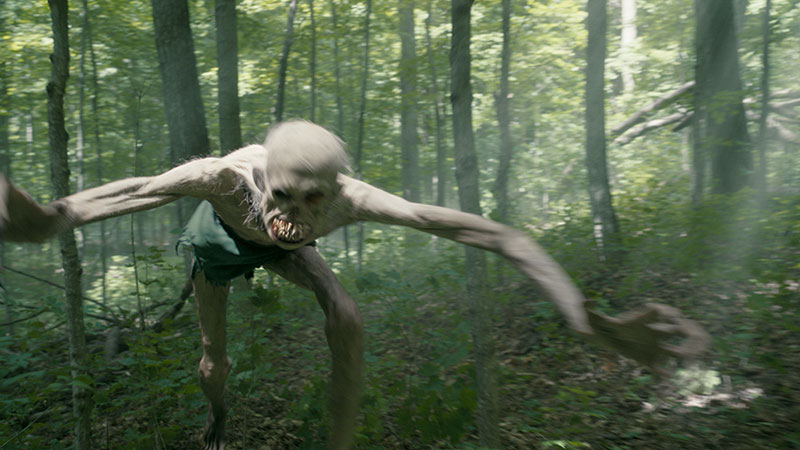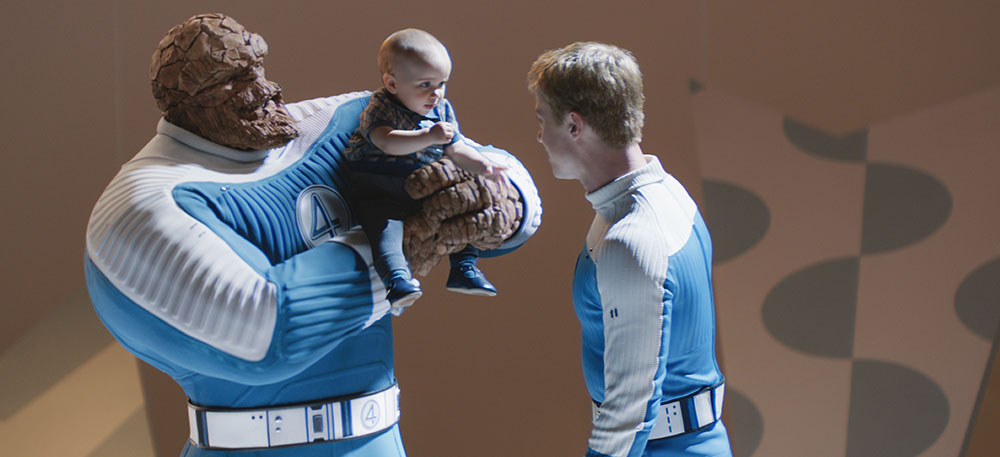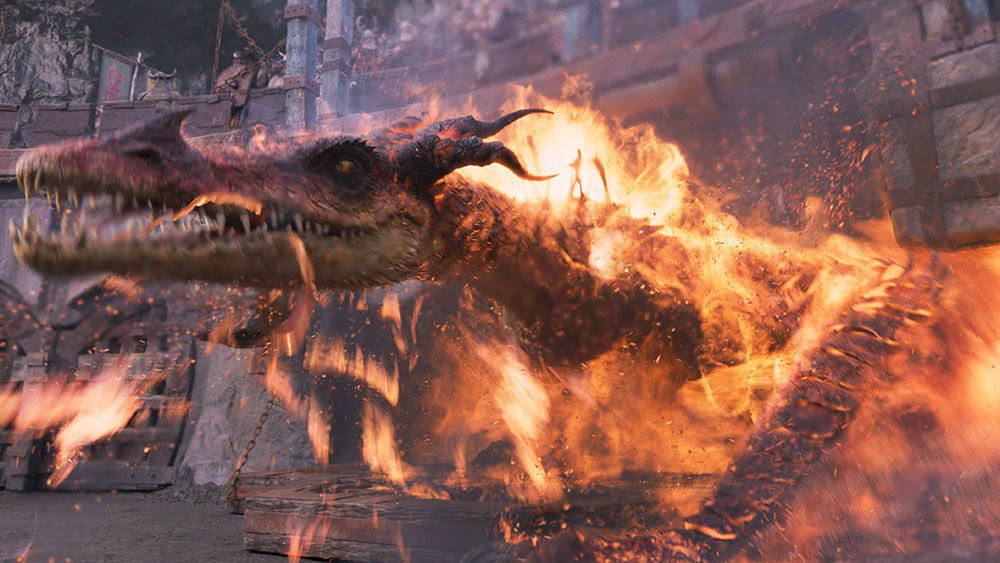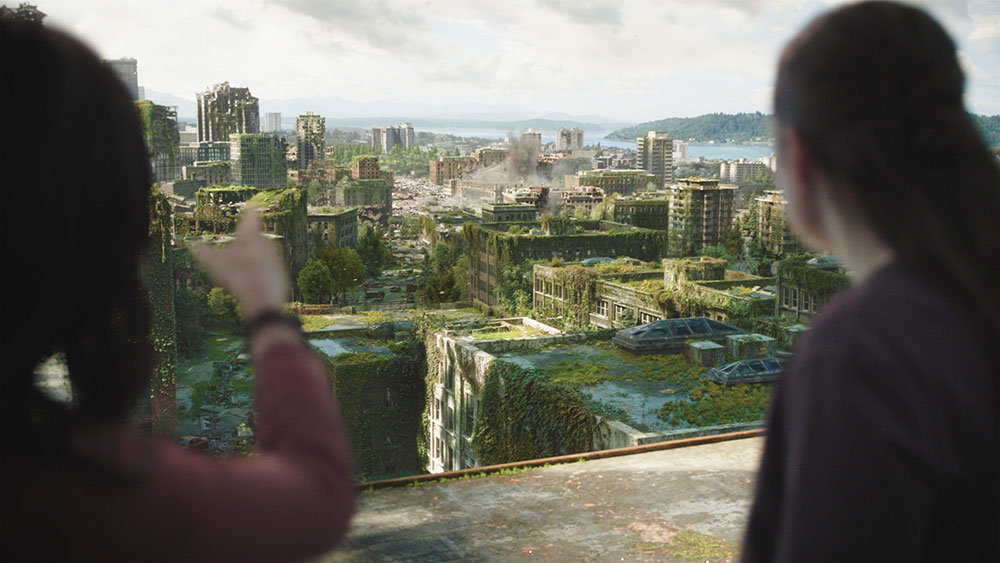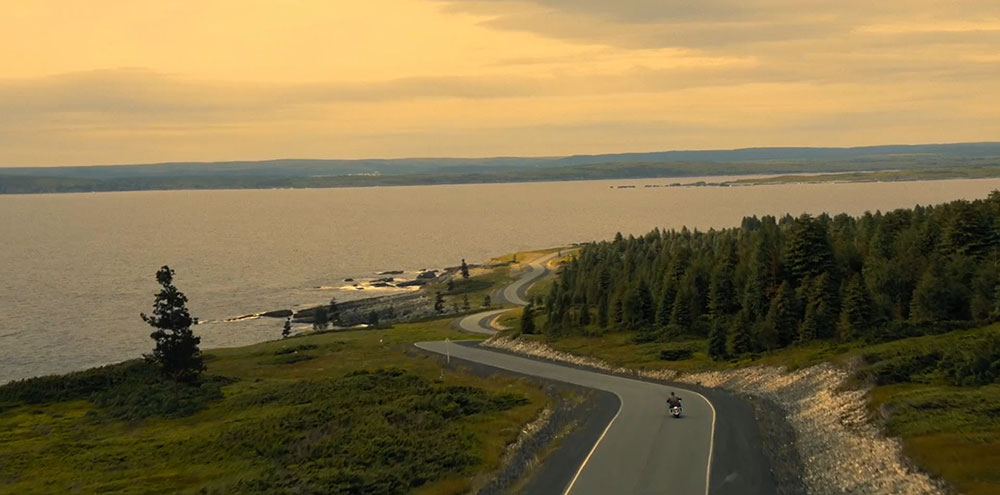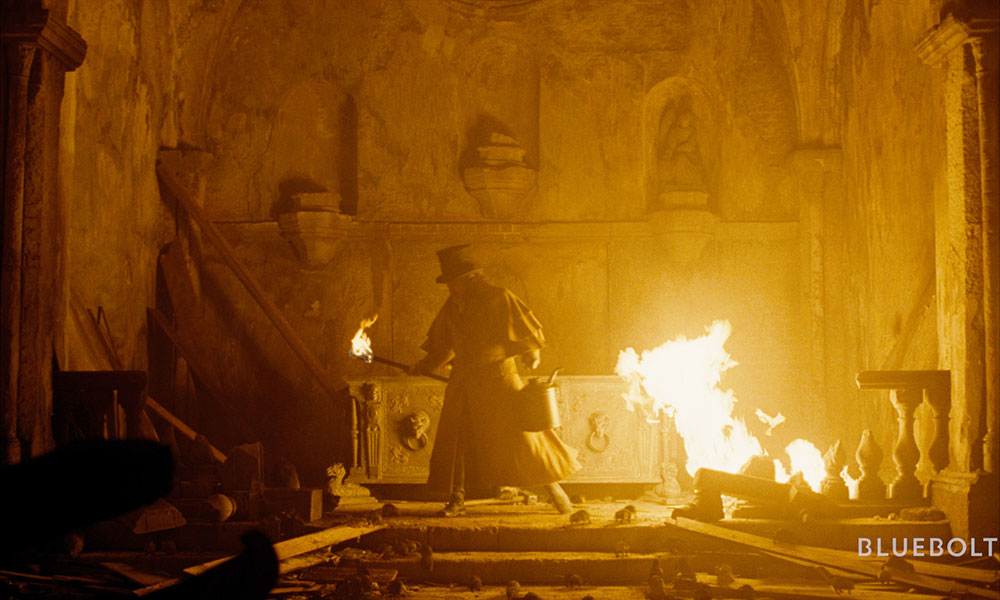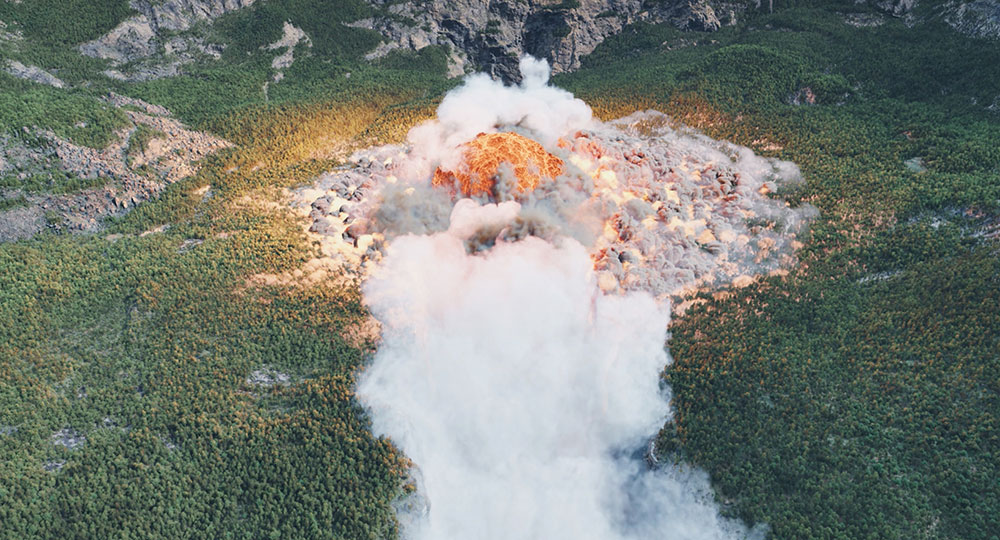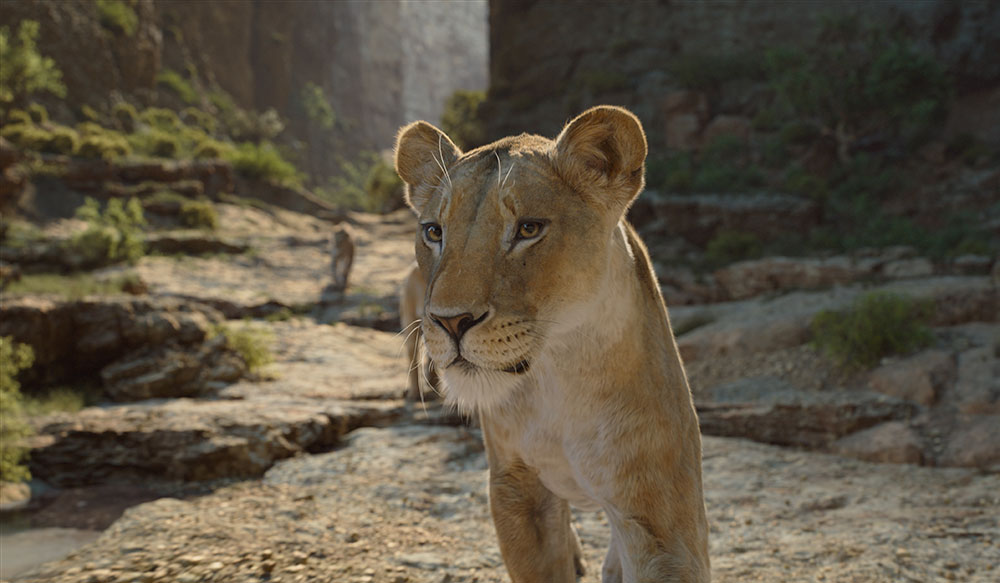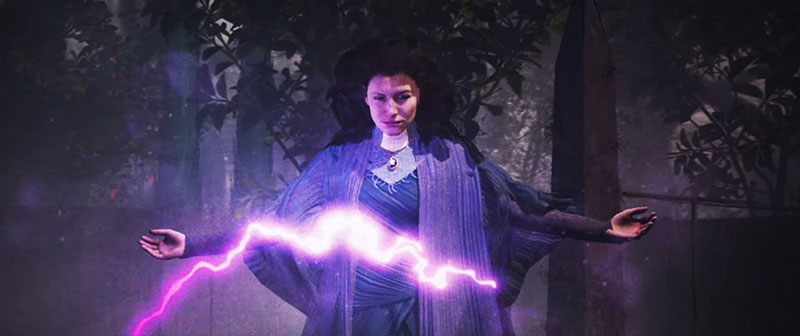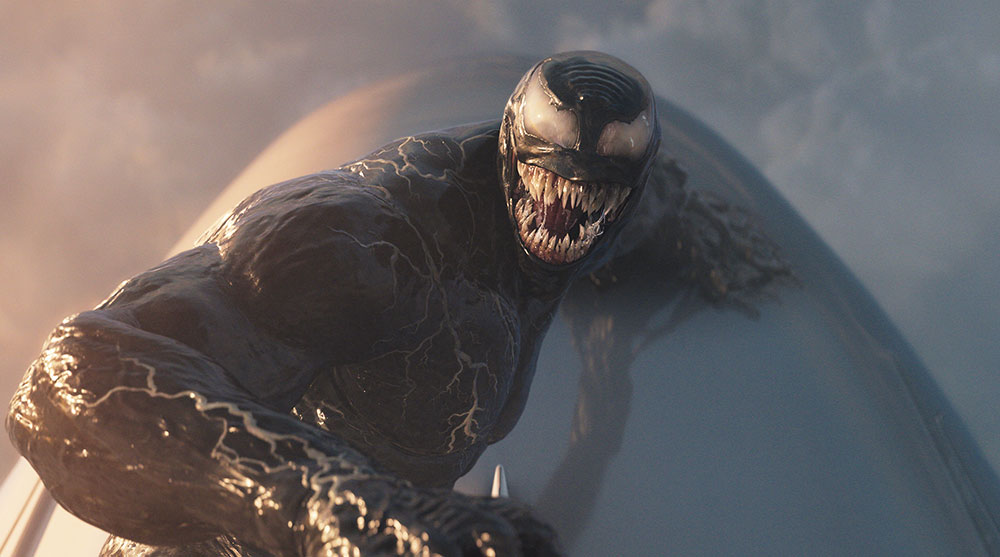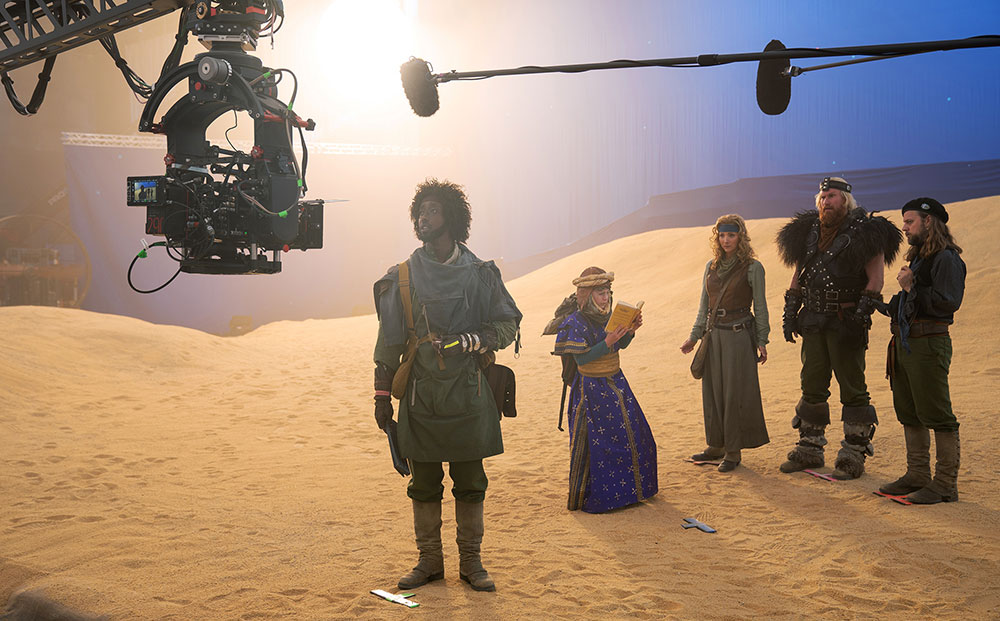VFX Supervisor Aidan Fraser at Whiskytree talks about creating aerial landscapes, historic environments and aircraft damage for the dramatic stories unfolding in ‘Masters of the Air’.

Whiskytree’s involvement with Masters of the Air began in 2021 when the series’ VFX Supervisor Stephen Rosenbaum approached the company’s CEO and owner Jonathan Harb. Stephen had worked previously with the Whiskytree team, and asked them to look after a handful of shots.
VFX Supervisor Aidan Fraser started on the project in autumn of that year. “Jonathan described it to us as ‘a World War 2 show about pilots’. It was undergoing a long development period, and Covid slowed it down even further,” said Aidan. “However, once production did get underway and the departments’ work progressed, our shot count grew from 14 to nearly 300 and the work continued for about 18 months. It was exciting. Our company is fairly small and, at most, we would have only about 30 artists working at any one time.”
Taking Off
“We had started with invisible work in the environments. This included shots of live action, captured in a volume against projected background imagery that was mainly used as previs and was going to need replacing in post. Aidan said, “One was a take-off sequence shot inside a plane with the actors. The director wanted to be able to turn the camera in all directions to follow the conversation between the characters in a natural way, and needed backgrounds for any angle.
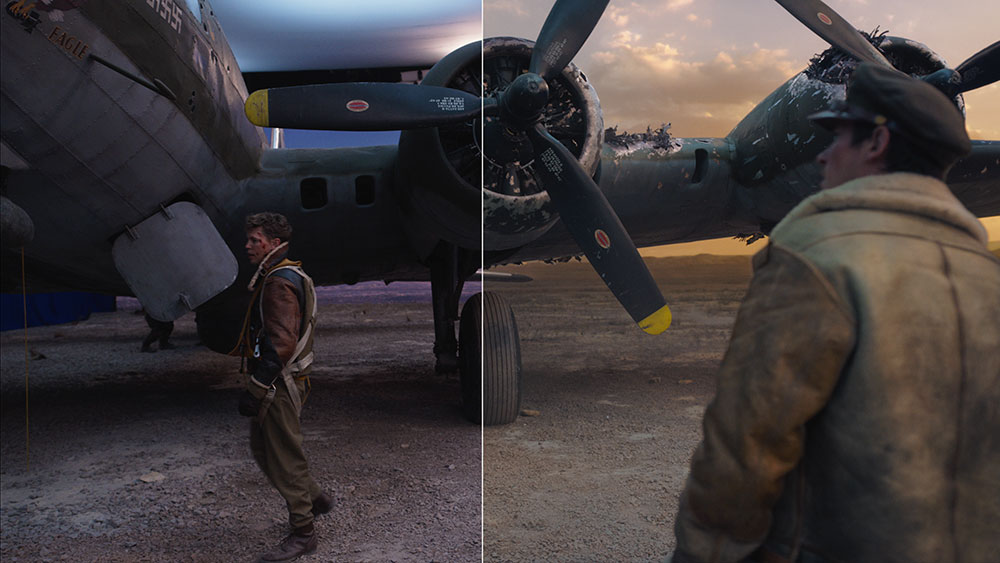
This shot above was captured in a volume with blue screen at the back, plus naturalistic sky lighting effects overhead. The artists could add the sky and backgrounds with much less blue contamination in the live action. It also shows the heavy plane damage that featured in many sequences.
“So in that case, our work was in fact very visible in terms of the camera, but had to be INvisible in terms of blending in and keeping the focus on the dialogue. It also gave us the challenge of longer shots that kept our work in view for several minutes.”
The team’s collaboration with Stephen and the production led to shots that were more complex and called for more creativity. That was when the chance to work on the D-Day sequence came their way, and on a sequence portraying a food drop mission over villages in The Netherlands.
Lighting and Atmosphere
Whiskytree had worked with virtual production techniques earlier on, mainly creating assets for LED projection, or up-rezzing assets after a shoot to improve the quality of the backgrounds. For Masters of the Air, the production knew that some of their projections were not of a quality that was going to be directly useful in post, but were created and used for realistic on-set lighting and atmosphere and then, like the take-off sequence, replaced in post.
The solution was sometimes very straightforward, but effective. “For instance, when we shot scenes in fog we would often use a grey screen. It gave the right tone to the lighting and avoided green or blue spill onto the live action. It also produced more natural results after compositing in the backgrounds, even if it did call for a lot more rotoscoping instead of keying. At times we were using some of the new AI tools for roto, to save time.”
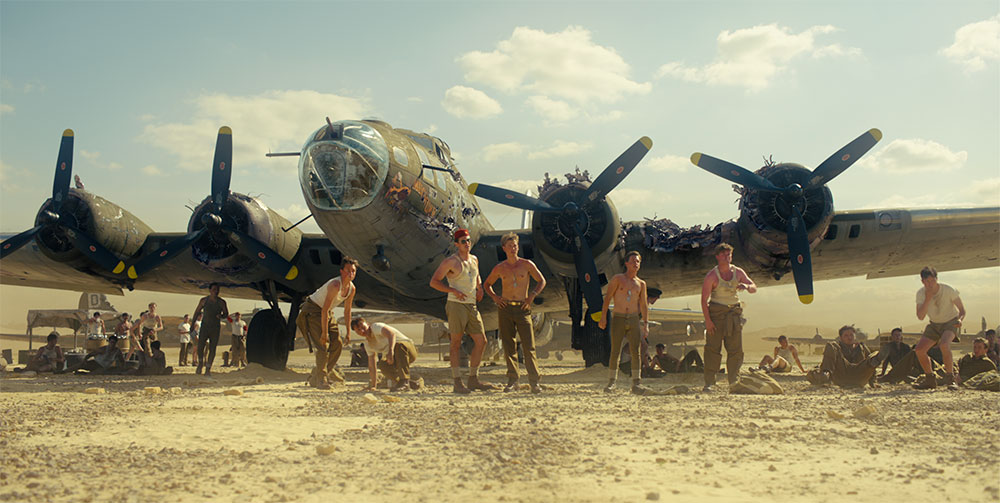
In this shot above of the pilots waiting to be rescued in the desert, the whole environment was created at Whiskytree, from the sky to the dust and all planes in the background – the only practical plane is the one in the foreground where the actors are standing. You can also see some of the extensive aircraft damage the artists created.
Visual Storytelling
Whiskytree built some of the background environments entirely, or almost entirely, from scratch in 3D. For a sequence in Paris taking place in 1943, the pilots are travelling by train from the outer suburbs, entering the city via Gare du Nord, and ending in among the densely populated apartment blocks. To build Paris, they had a collection of black and white photos as reference, and decided to re-create the route the characters’ train would have taken.
The team used a contemporary map to figure out what buildings they would have been passing at that time, and then investigated to see which ones were still standing. They were able to construct a corridor for the train journey starting with models of those surviving buildings, and filling in the ‘blanks’ between them with authentic looking architecture. “We also needed to estimate how much debris, dirt and destruction the Occupation would have created in the city, and added this to the shot as well. Overall, the goal was to contrast Nazi-occupied Paris with modern times.
“We started the sequence with a wide establishing shot, and then moved inside the train with the characters to show the many details – buildings, people and activity, cars – from that point of view. It was an exercise in visual storytelling. To produce the extensive suburbs viewed from a distance, we procedurally generated the geometry with a basic range of shapes, and then projected imagery onto this. But as the action and camera moved closer and into the streets, we placed 3D assets by hand to build the environment.”
Feeling Real
Aidan noted that a lot of research material for this sequence came from the production, especially photographs. These were useful not only for detail of street life but also for helping them find the right angles to view the city from. He said, “They wanted to let the audience know very quickly, through landmarks and style, that this was Paris and at the same time create the right dramatic feeling.
“Authentic visual reference was critical throughout the series to make sure everything appeared and felt real, regardless of whether or not the filmmakers wanted to emphasise or change certain details to contribute to storytelling.”
The Nuremburg sequences were an example of starting with historical records, and building on that to tell the story of the devastation that occurred there. In the Zeppelinfeld area of Nuremburg with the Congress Hall, where the Nazis would hold rallies during the war, their work was based on concept art and photo reference and then given a dark, heavy atmosphere to help convey events in the story.
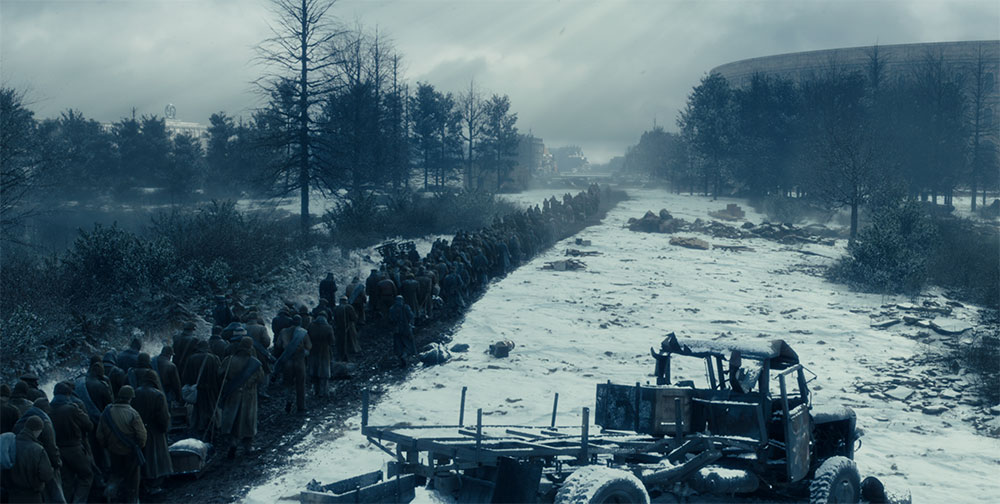
A shot of this area under heavy snow shows a long line of POWs leaving Nuremburg on foot, stretching into the distance. The plate from set only contained the queue of actors and the damaged truck in the foreground. The artists created and added the snow and trees into this shot, with buildings of Zeppelinfeld off to the left and the Congress Hall on the right, the dramatic sky above and the wreckage strewn across the view. In such cases, the production wasn’t always sure of exactly how a shot should look in detail but knew what it should convey in terms of story, similar to the shot in Paris from the train.
D-Day Normandy Landings
Across the show, such shots gave Whiskytree a lot of creative freedom. The aerial shot over the beach showing the Normandy landings on D-Day was especially interesting. The team created this as a completely digital shot, starting by producing a number of concept drawings in-house and finally deciding on a mixture of a few of these. When they had almost finished, they realised they could give the scene more impact by using a different camera angle. It meant almost starting from scratch, but was worth it. (See image at the top of this article.)
“We also altered the order in which events would have unfolded on that day. For instance, some of the activity you see would actually have occurred a couple of days after the D-Day landing, though it is shown as if it happened on the same day,” Aidan said. “We wanted to include tremendous detail – medical tents, vehicles, people, pilots – to show the organised effort that was put into the aftermath of the landing, and built the whole scene in 3D without using matte paintings. Our approach was similar to the way you would build up a painting piece by piece, in order to give it a sense of composition.”
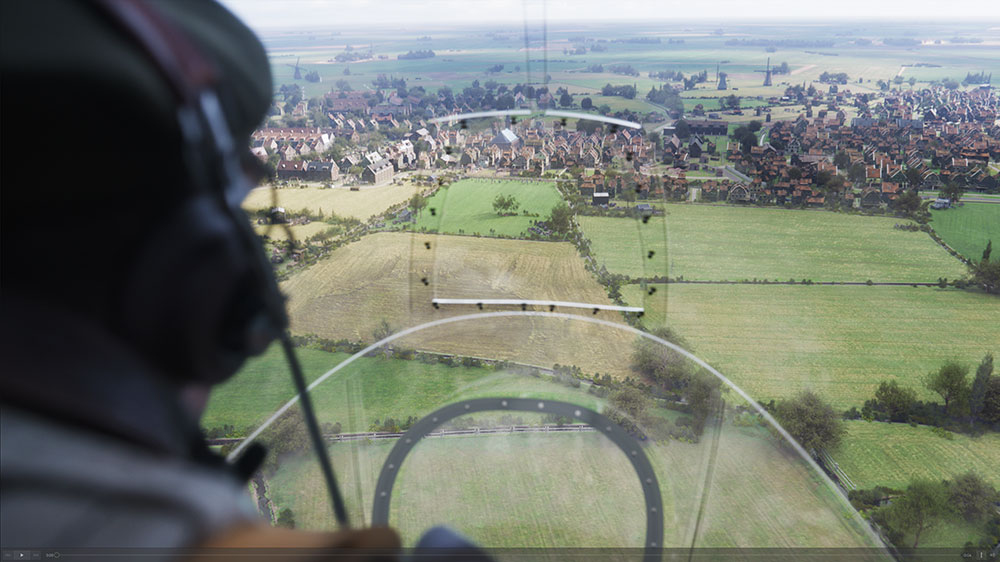
Evoking more upbeat emotions toward the end of the series was a sequence depicting the pilots’ participation in the food drop operations that helped relieve the famine in German-occupied Holland, a triumphal moment of bringing aid to people. The artists built a complete Dutch village based on research and then added archetypal elements like tulips and windmills to give the scene a happier, familiar feeling.
Whiskytree worked on corresponding shots captured both on the ground and from the air. Continuity was essential – the buildings and features seen from the air had to appear in the ground shots as well. Although most of the series was shot in the UK, the production did capture aerial shots over Holland to give the team the reference they needed to re-create the area authentically.
Calculated Damage
The heavy damage to the airplanes was an important feature in many sequences. Aidan said, “The B17s the pilots flew on missions would often return with huge holes torn into the skin of the aircraft. The physical planes used on set were undamaged, sometimes with decals indicating where bullet holes and other damage should go. The question was – how to take a 3D airplane model and add severe damage without having to go back and remodel it? Furthermore, our artists had to do this many times over.
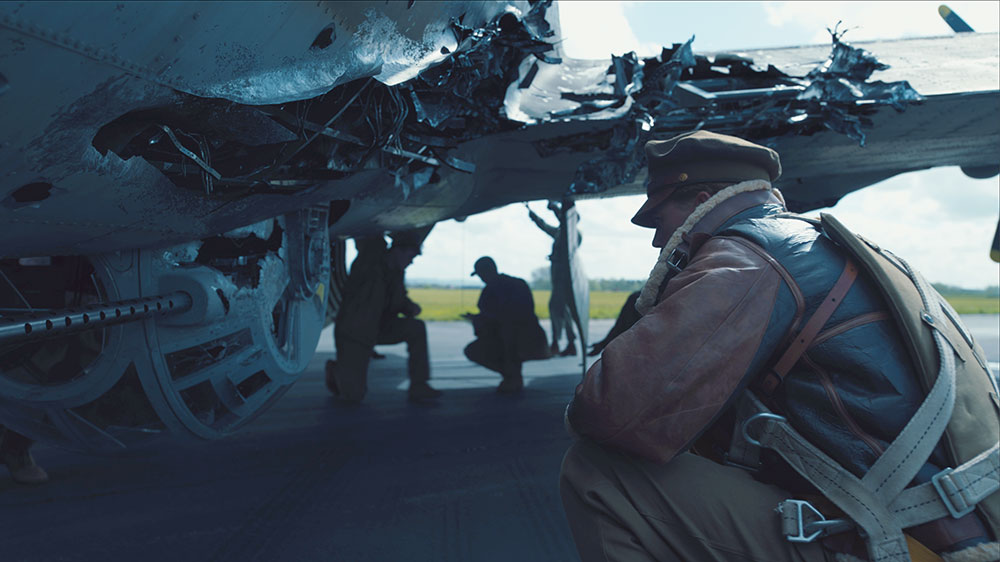
“We devised a technique using Boolean operations and shapes that allowed us to ‘subtract’ the area of the holes and also to move them over the surface. In other words, we could place a chunk of damage in one spot first, then see how it looked over in another spot, and make creative decisions in steps without having to commit and re-model.
Again, photo reference was invaluable here. The distinctive look of the paint peeling to expose the raw aluminium underneath was a procedural effect created at render time. “We could still render the final design and look of the damage with fine detail, even when the model was not so detailed. We had a library of other types of damage as well that we applied procedurally as randomised textures. For instance we could decide to scatter a spray of bullet holes without going in to create each one,” said Aidan. whiskytree.com
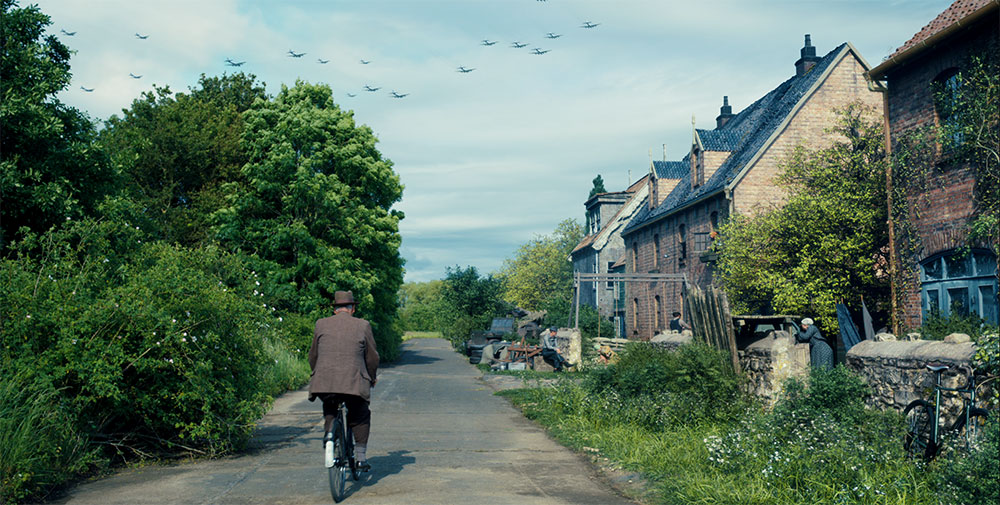
Whiskytree created this shot of a quiet village lane where a man cycles away from camera as B17s fly past overhead. The intention was to show Europe returning to normal after the Occupation. In the plate, an empty field occupied the right side of the frame, which the artists replaced with a row of digital village houses and people engaged in typical activity.



